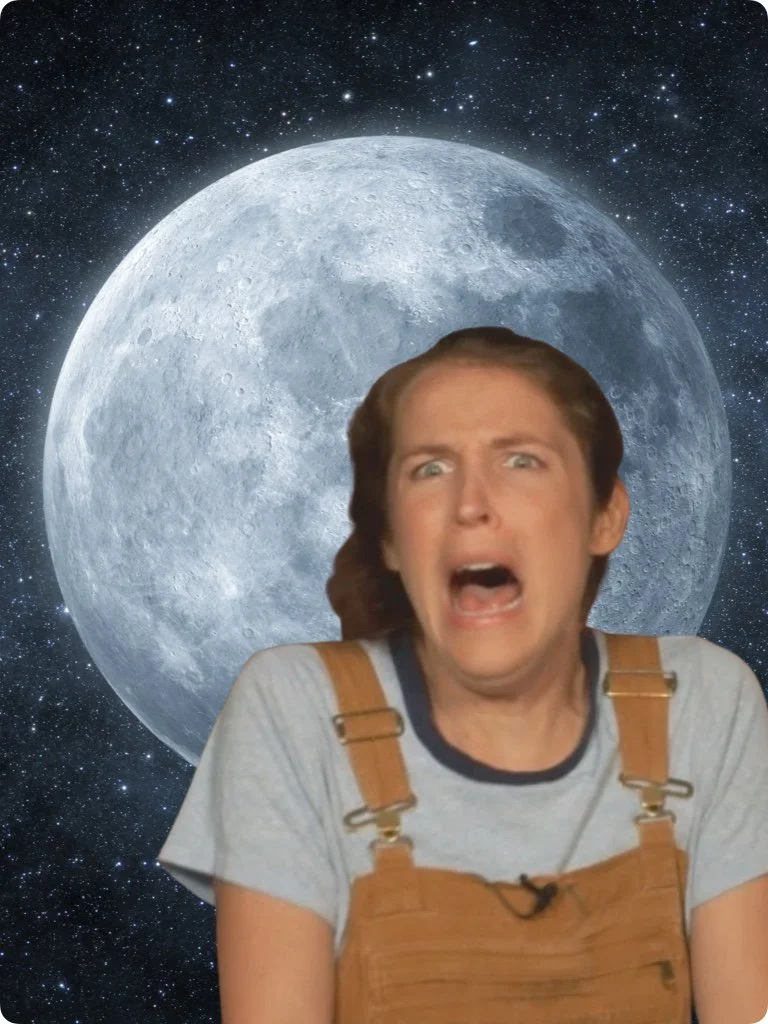Ask Tappity: Science Questions for Kids > Where Did the Moon Come From?
Where Did the Moon Come From?
Did the Moon come from somewhere out in space? Or was it once part of Earth? Watch this video to find out, or read our explanation below!
The Moon Used To Be Part of the Earth
When the Earth was still new, about 4.5 billion years ago, it didn’t have a Moon. Scientists believe that another early planet collided and merged with the Earth, and the debris that was blasted off by the collision went into orbit around the Earth. All of that stuff eventually gathered together because of gravity (a process called accretion) and formed the Moon!
The Moon Used to Be Covered In Lava
When the Moon first formed, scientists believe that the surface was one giant lava ocean for the first hundreds of millions of years. Because it formed so quickly - only taking 1-12 months after the initial collision - scientists think a ton of heat got trapped inside the Moon, making the surface molten lava until it finally cooled down.
The Moon Is Getting Farther Away
The Moon is slowly getting farther and farther away from Earth, by about 3 cm per year - close to the same rate at which our fingernails grow. The farther the Moon gets away, the slower Earth will spin. That means that over the course of billions of years, days will last longer. In fact, when the Moon first formed, and was much closer to us, scientists believe a day on the Earth was as short as 4 hours!
Moon Facts for Kids
Questions about the Moon? Look no further!
-
Yes! Well, with a lot of help. NASA has plans to establish a lunar base within the next 20 years that would allow astronauts to live on the Moon for up to 2 months.
-
Astronomers have discovered ice on the North and South poles of the Moon, inside cold, permanently shadowed craters.
-
No life has yet been discovered on the Moon, and astronauts have checked! Scientists analyzed Moon rocks from the Apollo mission for lunar lifeforms, but didn’t find anything.
-
The Moon’s diameter is about ¼ Earth’s diameter. That means that if the Earth were the size of a bowling ball, the Moon would be about the size of a golf ball.
-
There isn’t any weather on the Moon, because the Moon doesn’t have an atmosphere. In other words, there’s no air, so there's no wind to blow around. Because there’s no air, if you dropped a hammer and a feather at the same time on the Moon, they would fall at the same exact speed! Don’t believe it? An astronaut on the Apollo 15 mission tried it in 1971, so you can watch the video to see for yourself!
-
Scientists have successfully grown plants in samples of lunar dirt (called regolith) brought back from the Apollo missions. The plants grew slowly, but the fact that it’s possible at all is promising for establishing a lasting human presence on the Moon.
-
A lunar year is the time it takes for the Moon to go all the way around the Earth - about 27 Earth days. A lunar day is the time it takes for the Moon to spin all the way around with respect to the Sun, which takes about 29.5 days.
-
The Moon takes the exact same amount of time to rotate with respect to Earth as it does to go around the Earth, we more or less always see the same side of the Moon facing us. We didn’t get to see the far side of the Moon until a satellite photographed it in 1959!
-
That’s right! The Moon has moonquakes, just like the Earth has earthquakes. The strongest of them registered a 5.5 on the Richter scale - strong enough to move heavy furniture on Earth. And they continued for over 10 minutes! Astronomers still aren’t sure what causes these quakes - maybe astronauts on a Moon Base could study them further.
More Answers to Space Questions from Kids
How big is the universe? What was the Big Bang? The Tappity Astronomy library has interactive lessons with answers to those questions and more!
Want Even More Science for Kids?
Dive into Tappity, the world’s largest interactive K-5 science library. Find everything from penguins to planets and even protozoa! So whether you’re an early engineer, a budding biologist, or an aspiring astronaut, you'll be sure to discover something new just for you.
























